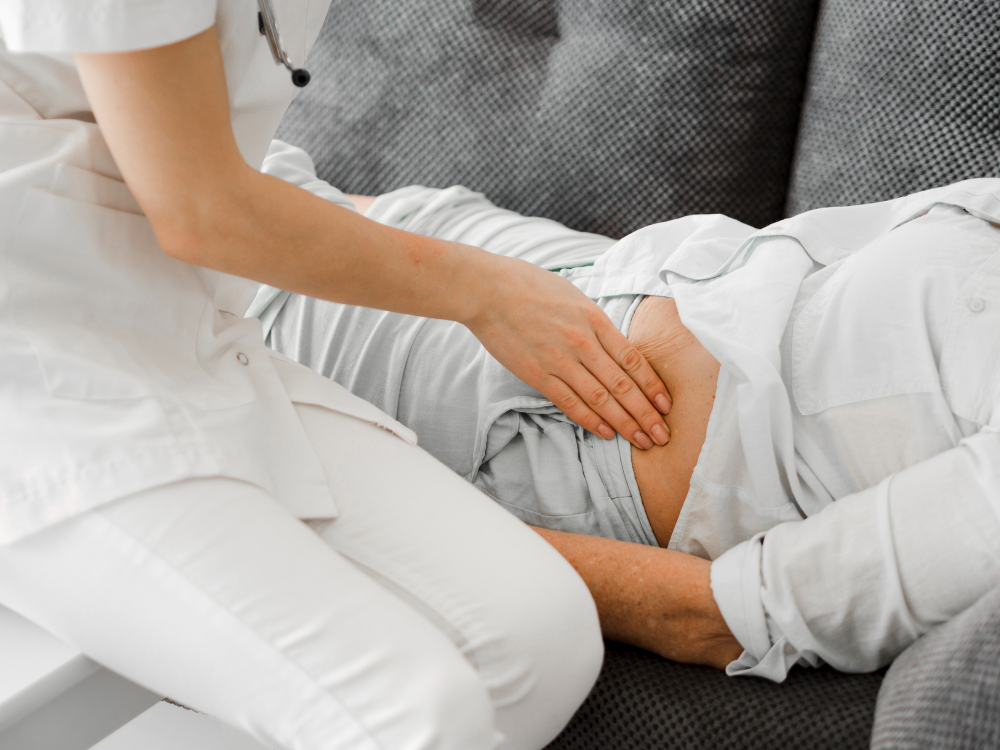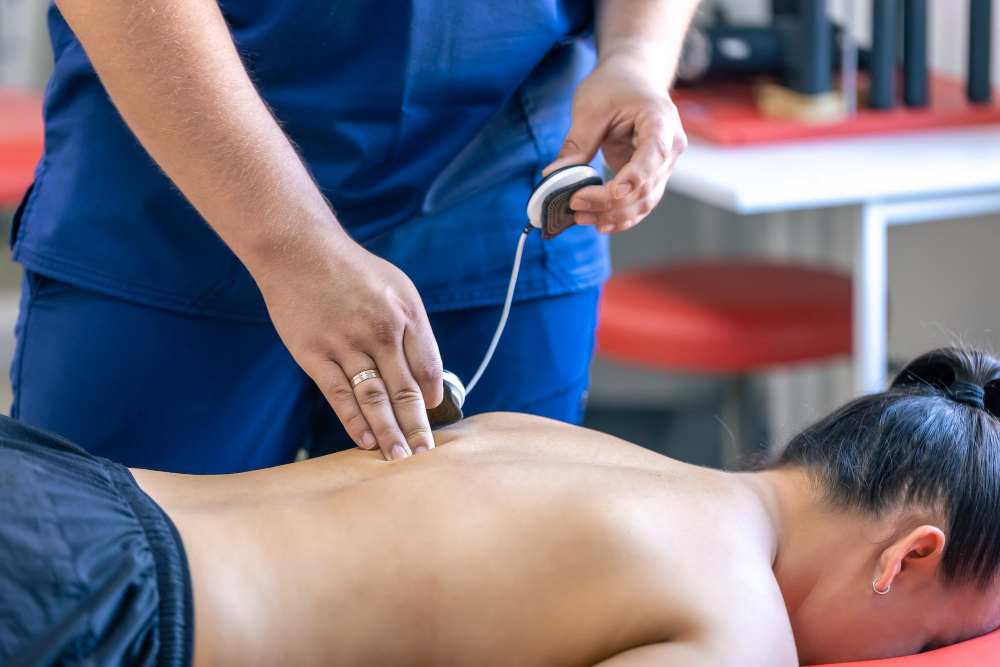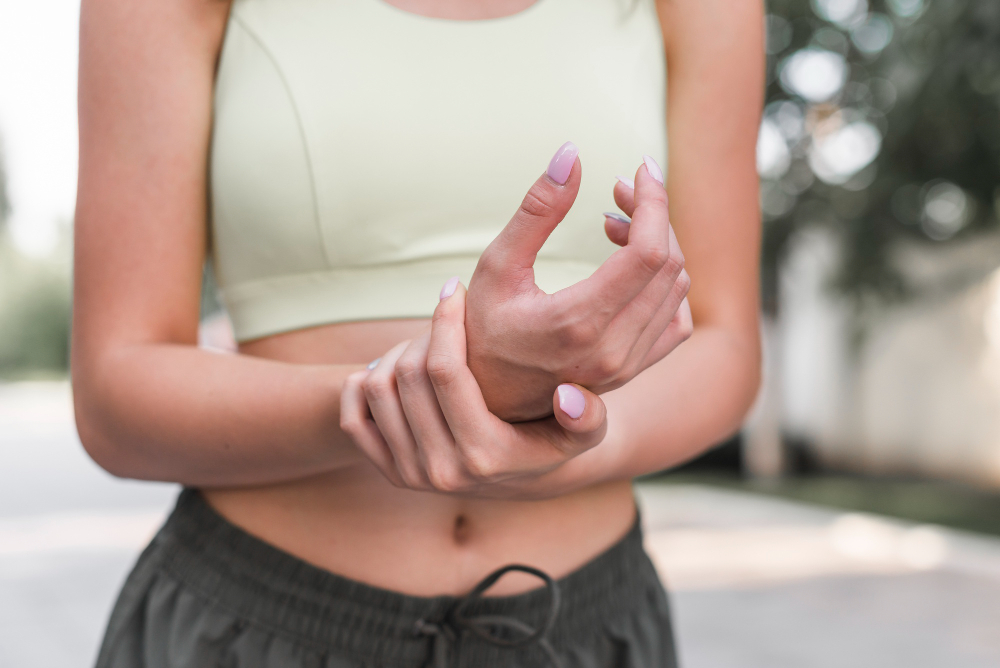Staying active is crucial for maintaining a healthy lifestyle, but what if your efforts to exercise are met with pounding headaches? You’re not alone in experiencing this phenomenon. Many people may wonder “Can exercise cause headaches?” due to the frequent feelings of pain they get when being active!
In this article, we’ll delve into the different reasons you might get headaches when you’re active and provide detailed answers to help you understand and manage this issue.
Can exercise cause headaches?
Yes, exercise can indeed trigger headaches in some individuals. The intensity and type of headache may vary, but it’s essential to identify the underlying causes to address the issue effectively.
What is an exertional headache?
Exertional headaches are intense, throbbing pains that occur during or after physical activity. They are often a result of increased blood flow to the brain during exercise. These headaches can be triggered by high-impact activities such as weightlifting, running, or even simple actions like coughing and sneezing.
How to treat exertional headaches:
Over-the-counter pain relievers can help alleviate the pain, but if the headaches persist, it’s advisable to consult a healthcare professional.
How to prevent exertional headaches:
Gradually warm up before intense exercise, stay hydrated, and maintain proper breathing techniques to reduce the risk of exertional headaches.
What are primary exercise headaches and secondary exercise headaches?
Headaches triggered by physical activity are broadly categorised into two types: primary exercise headaches and secondary exercise headaches. These two categories differ in their underlying causes and characteristics.
Primary exercise headaches:
Primary exercise headaches are a subtype of primary headaches, which means they occur on their own without being linked to an underlying medical condition. These headaches are typically short-lived, and can last anywhere from a few minutes to several hours. They often manifest as a throbbing pain that affects both sides of the head.
Characteristics of primary exercise headaches:
- Typically occur during or after intense physical activity
- Short duration, lasting between 5 minutes and 48 hours
- Usually localised to both sides of the head
- Throbbing or pulsating pain
- May be accompanied by symptoms like nausea or sensitivity to light and sound
Causes of primary exercise headaches:
The exact cause of primary exercise headaches remains unclear, but they are thought to be linked to the dilation and constriction of blood vessels in the brain. The rapid changes in blood vessel size could trigger pain signals and lead to headaches. Factors such as dehydration, inadequate warm-up, or improper breathing techniques might contribute to their onset.
Secondary exercise headaches:
Secondary exercise headaches are a result of an underlying medical condition or an external factor. These headaches are not as common as primary exercise headaches, but they can be more concerning as they are often associated with other health issues.
Characteristics of secondary exercise headaches:
- Can occur during or after exercise, but also in non-exercise situations
- Duration varies, may last longer than primary exercise headaches
- Often linked to an underlying medical condition
- Can be localised or widespread
- Pain characteristics depend on the specific condition causing the headache
Causes of secondary exercise headaches:
Secondary exercise headaches can be caused by a range of factors, including:
- Cardiovascular issues: High blood pressure, heart disease, or blood vessel abnormalities
- Neurological conditions: Migraines, neuralgia, or other disorders affecting the nervous system
- Cervical spine problems: Issues in the neck and spine, such as cervical disc herniation
- Sinus problems: Inflammation or infection of the sinuses
- Medication side effects: Certain medications can trigger headaches during exercise
- Exertional factors: Overexertion, heatstroke, or excessive straining
The different reasons you might get headaches when you’re active
There are several potential factors contributing to headaches during exercise. Let’s explore some of the common culprits and learn how to deal with them.
Rapid blood pressure changes:
One of the most common reasons for sudden exercise-induced headaches is the rapid fluctuation in blood pressure. When you engage in physical activity, your body responds by increasing blood flow to the muscles to meet the demand for oxygen and nutrients. This increased blood flow can lead to a temporary increase in blood pressure. If your blood vessels react strongly to these rapid changes, they may constrict and expand too quickly, triggering a headache.
How to treat rapid blood pressure change headaches:
If you experience a sudden headache due to rapid blood pressure changes, stop your activity immediately. Sit down, relax, and take slow, deep breaths. Applying a cold compress to your forehead can also help alleviate the pain. If the headache persists or worsens, consider taking over-the-counter pain relievers as directed. Consult a healthcare professional if the headaches recur.
How to prevent rapid blood pressure change headaches:
To prevent headaches from rapid blood pressure changes, ensure that you warm up gradually before engaging in intense exercises. Incorporate dynamic stretches and light cardio to gradually increase your heart rate. Focus on controlled breathing throughout your workout to help regulate blood pressure.
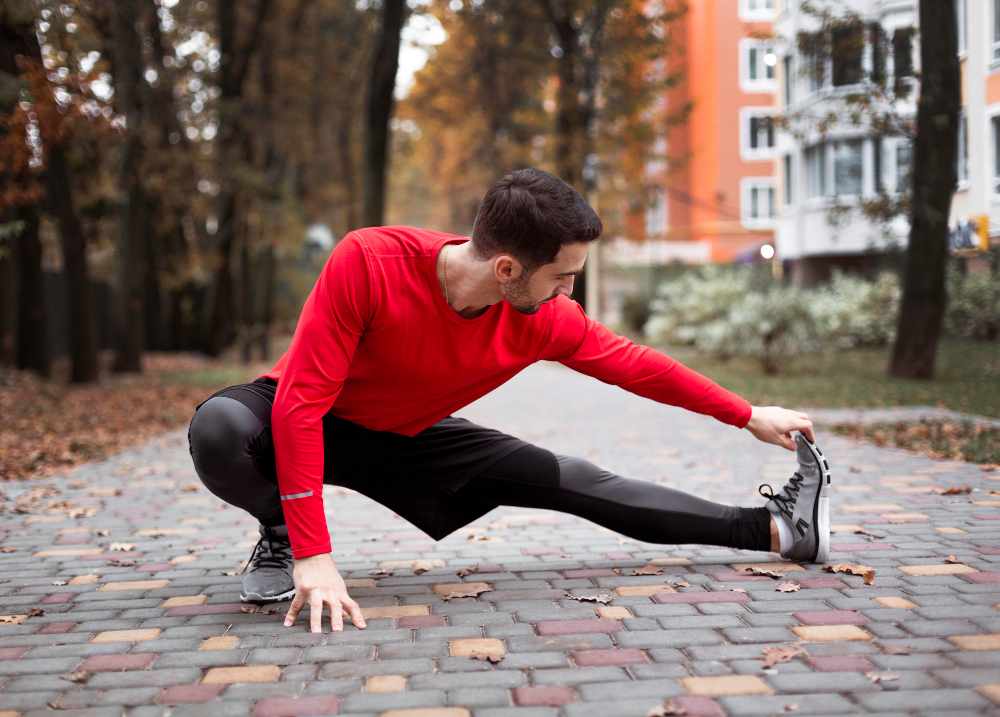
Muscle tension and strain:
Improper form and technique during exercise can lead to muscle tension and strain, particularly in the neck and shoulder area. Poor posture or overexertion can cause the muscles in these areas to tighten, leading to tension headaches. These headaches can develop suddenly during your workout due to the physical stress you’re placing on your body.
How to treat muscle tension and strain headaches:
If muscle tension and strain trigger your headache, gentle neck stretches and shoulder rolls can provide relief. Applying heat to the affected area can help relax tense muscles. Over-the-counter pain relievers can also be effective. If the tension persists, consider a massage or consult an osteopath for specialised guidance.
How to prevent muscle tension and strain headaches:
Pay close attention to your posture and form during exercises. Engage in regular stretching and flexibility exercises to maintain muscle suppleness. Incorporate exercises that strengthen the muscles supporting your neck and shoulders. Gradually increase the intensity of your workouts to avoid sudden strain.
Dehydration:
Dehydration is a common trigger for headaches, especially during physical activities. When you’re active, your body loses fluids through sweat, which can lead to reduced blood volume and cause blood vessels to narrow. This constriction can result in headaches.
How to treat dehydration-induced headaches:
Drink water or an electrolyte-rich beverage to rehydrate. Rest in a cool, shaded area if necessary.
How to prevent dehydration-induced headaches:
Ensure you’re properly hydrated before, during, and after exercise. Aim to drink water regularly throughout the day, and increase your intake when engaging in physical activities.
Low blood sugar:
Low blood sugar levels, often caused by not eating enough before exercising, can trigger headaches. Glucose is the brain’s primary source of energy, and a drop in blood sugar can lead to headaches and even dizziness.
How to treat low blood sugar-induced headaches:
Consume a small, easily digestible snack that includes complex carbohydrates and protein to raise your blood sugar levels.
How to prevent low blood sugar-induced headaches:
Eat a balanced meal containing carbohydrates, protein, and healthy fats before exercising. Also, consider having a light snack if your workout session is prolonged.
What causes headaches?
Headaches can arise from a myriad of factors, ranging from genetics and stress to dietary choices and underlying medical conditions. Exercise-induced headaches are a subset of headaches triggered by physical activity, often linked to exertion, dehydration, and low blood sugar. By understanding the diverse causes of headaches, you can take proactive steps to manage and prevent them, allowing you to enjoy a more comfortable and headache-free active lifestyle.
If your headaches persist, consulting a healthcare professional can provide valuable insights into the specific causes affecting you and guide you towards appropriate solutions.
Why do I get a sudden headache when working out?
Sudden headaches during workouts might be due to the rapid increase in blood pressure, muscle tension, or even poor posture. Make sure you’re using proper form and techniques during exercise.
Experiencing headaches during exercise can be frustrating, but understanding the underlying causes can help you manage and prevent them. If you continue to struggle with exercise-induced headaches, consider consulting an osteopath. Our team of experts can provide tailored advice and techniques to help you stay active without the discomfort of headaches.


